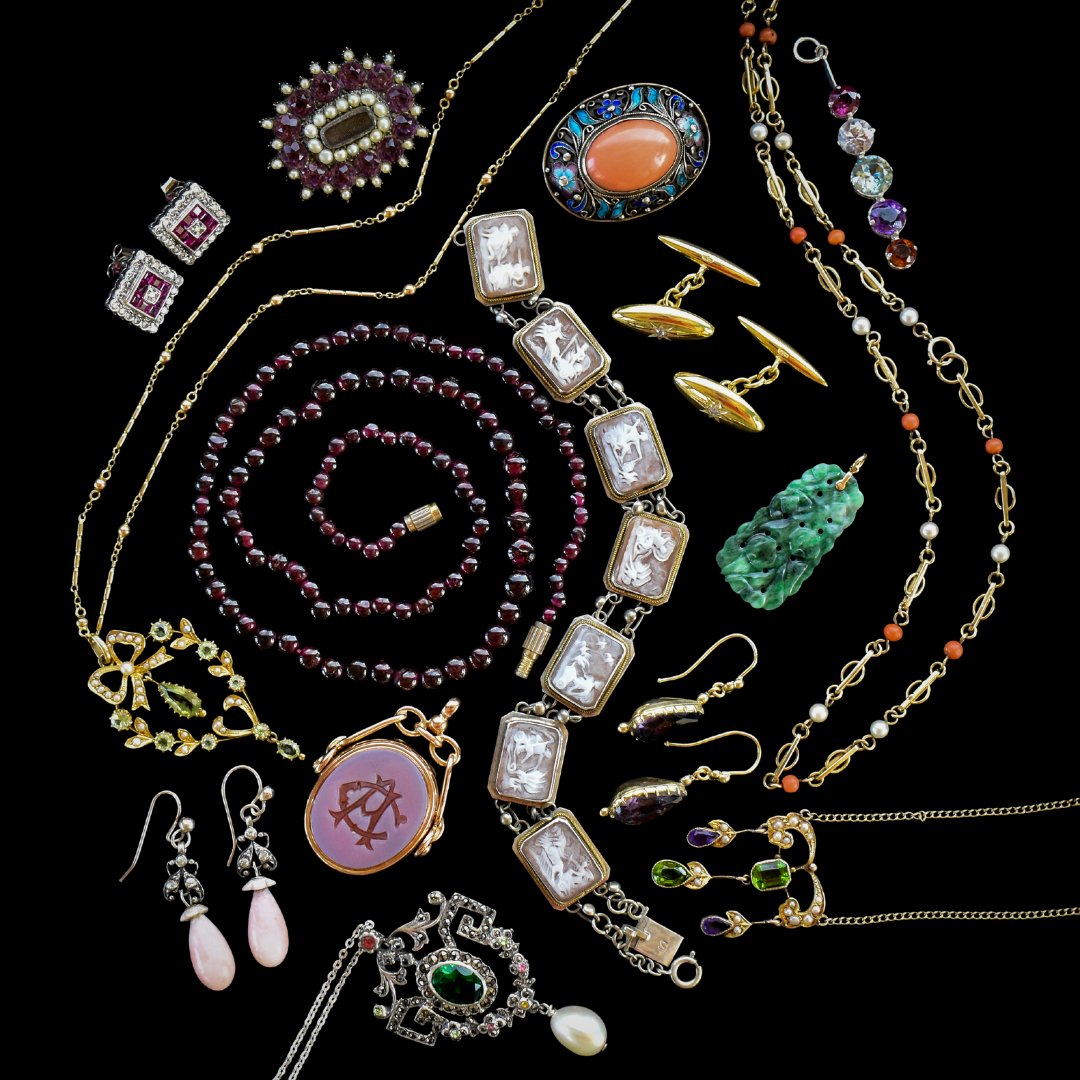Hallmarks are like secret codes etched into jewellery, waiting for you to crack them. If you’re ready to dive into the fascinating world of antique jewellery hallmarking, grab your metaphorical magnifying glass and let’s decode these tiny treasures together!
What is a hallmark?
Think of hallmarks as a jewellery passport. They tell you where a piece has been, what it’s made of, and sometimes even who made it.

How to read hallmark symbols
The Metal Purity Mark
This mark indicates the precious metal's content and is central to understanding the piece's quality.
Gold
Antique gold jewellery in Britain often features 9 carat gold, popular for its affordability and durability.

Common examples:
375 (9 carat)
585 (14 carat)
750 (18 carat)
Silver
Look for the Lion Passant, a symbol of sterling silver (92.5% purity). Lower purity marks, like 800, are less common but may appear on older pieces.

Platinum
Stamped with numbers like 950 or the words "PLAT" or “PLATINUM” on antiques.

The Assay Office Mark
The assay office mark shows where the piece was tested and hallmarked. Britain has a rich hallmarking tradition, with three primary assay offices seen in antique jewellery:
London: Represented by the iconic Leopard’s Head, still in operation.

Birmingham: Marked by an Anchor, still in operation.

Chester: Symbolised by three wheat sheaves and a sword, closed in 1962.

Knowing these symbols can tell you not only where a piece was tested but also its cultural and historical context.
You can read more about the assay offices here.
The Date Letter
This hallmark is a true time capsule, indicating the year the jewellery was hallmarked.
Each year is represented by a specific letter, with the font and shield shape changing every cycle (usually 20-25 years).

For example: A in a square frame might signify 1900, while the same letter in an oval might indicate 1975. You can find more information in the Hallmarking guidance notes.
The Maker’s Mark
This is the artisan or manufacturer’s unique signature, typically consisting of initials or symbols.
Examples:
“B.H.”: Benjamin Hall, a prominent Victorian jeweller.

Identifying the maker adds a personal touch to your jewellery’s history, connecting you to the hands that crafted it.
Additional Marks (Optional)
Duty Marks: Older pieces may include the monarch’s head, signifying that taxes were paid.
Import Marks: A triangle or foreign symbol may appear on imported jewellery, showing compliance with British standards.
Why British Hallmarks Are So Special
The British hallmarking system is steeped in tradition and unparalleled in its precision. For collectors, each hallmark isn’t just a mark, it’s a gateway to the past. By learning to read these tiny symbols, you unlock the stories of the artisans, regions, and moments in time that shaped each piece.
Whether you’re treasure hunting in a vintage shop or admiring your family heirlooms, British hallmarks let you uncover the secrets hiding in plain sight. So grab a loupe, start exploring, and let the stories unfold.
Here at Lancastrian Jewellers, we handpick every piece with an expert eye, so you know you’re getting something truly special. Whether it’s a sentimental gift or a new addition to your collection, we're happy to help you find exactly what you're looking for.





